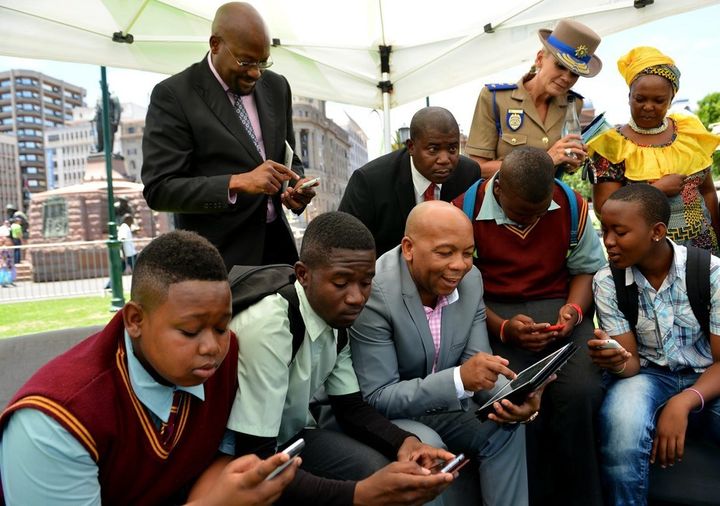
The potential of digital platforms are in their infancy. Though digital platforms, especially social media are everywhere, we have not even begun to scratch the surface of their potential in international development—particularly in promoting participatory democracy in Africa.
Multilateral international development organizations such as the World Bank and the United Nations are putting more effort both in the way of research and development, on platforms in participatory democracy. The World Bank’s 2016 Development Report focused exclusively on Digital Dividends and declared among other things, declared that “the internet opens new avenues for participatory democracy. (pg 43).
We see examples of digital platforms in democratic action in places like Mozambique in their most recent elections, mobile phone apps enabled citizens to “report instances of violence and voter intimidation, which improved voter turnout by five percentage points overall[1]” We have also seen the increased use of crowdsourced apps like the Ford Foundation-backed “Ushahidi” (Swahili for “testimony”) and “Uchaguzi” apps where voters can report and map election violence in their communities in Kenya. In fact, in the wake of Hurricane Sandy’s devastation of the East Coast of the United States, the Ushahidi app was used in the 2012 United States Presidential Election to create an online tool to allow citizens to find their nearest voting station and report on any voting difficulties. Over 40,000 reports were filed by American voters using the Ushahidi tool. But how can digital platforms promote democracy in Africa overall?
Here’s the good news. The internet is one of the most egalitarian platforms for dialogue and community-building that the world has ever known. Literally anyone with internet access, a social media account and a password can weigh in on an issue. As far as the internet is concerned, you and Barack Obama are equals. With internet access, both you and he can access exactly the same information. If you’ve got a social media account, you can both post. The difference being his extremely well-known brand that has garnered him a lot of followers and people sharing his content more widely. But the internet is not judgmental, it is the people who use it that are. As far as Twitter is concerned, your words are just as good as his and worthy of display. Whether or not your content lives or dies, is the function of the online communities that take an interest in and perpetuate what you have to say. There is no editor or evaluator that decides if your words see the light of day. If you have an account, you can post, full stop. And in a sense, this is the ultimate embodiment of democracy.
But here’s the “other” news. 3.5 billion people use the internet worldwide, which represents about only half of the world’s population. This is an increase from 2.21 billion in 2015, a difference of almost 1.3 billion users. Over 70% internet users are from 20 countries, only one of which is in Africa (Nigeria). This means about 180 countries collectively only represent 25% of internet usage. Among the top 20 internet user countries, you’ll find a mix of developing and developed nations. However, the developing nations that appear among the top 20 have relatively smaller internet penetration, meaning they have a lot of users because of their large populations (i.e. India) but the percentage of people who have access to the internet in their countries still lags far behind those of developing nations. Admittedly, this situation is hardly egalitarian. But the promising upward trend in internet access is projected to continue, with 21 billion connected devices expected by the year 2020.
Additionally, the cost of internet access can be prohibitive for people living in poverty. It’s one thing for internet to be available to you in theory, but quite another to be able to afford it. For example, the #DataMustFall hashtag campaign in South Africa is a response to the exorbitant costs of internet in the country. Though the International Telecommunication Union declared South Africa to have the most affordable internet on the African continent, South Africans, as evidenced by the #DataMustFall campaign, don’t agree and they are fighting back. And despite the affordability issue of internet access for South Africans, they are way above their fellow Africans in terms of overall access. Only 30% of people in Africa have internet access. This has to be corrected, and quickly, if digital platforms are going to promote democracy in meaningful ways.
Video: Internet Access to Increase in Southern Africa (SABC Digital News)
Yes there is upside, but there are also significant challenges. What this snapshot of the huge internet access gaps does is offer a clear blueprint for how to use digital platforms to promote democracy. There’s plenty of fertile ground. More and more people are connecting through social media and other digital platforms at an adoption rate that boggles the mind and the majority of new adoptions will be in developing nations. But there are questions that we need answered in order to make the most of digital platforms in the democratization process. For example, when someone in a developing country first gets internet access, who do they tend to connect with beyond immediate friends and family? What are they talking about when they do connect? What platforms are they using? Do we even know the stats on all of these for each developing country? By age? By gender? We should…
As it stands now, most of the digital concentration and effort in international development is on bespoke platforms that require a lot of heavy lifting to bring users to the platform. This is the e-equivalent of hanging a shingle outside and waiting for users to find and use our platforms. Though well-meaning, this requires the user to create a new username and password, download something new, learn how to use it, evaluate its effectiveness and bring other users in. This is a big ask for people whose access to the internet—and time—is costly.
I’m not at all a proponent of applying business principles full throttle to international development, given the very different objectives of the work. There is a very distinct difference between profit and poverty reduction as end goals. But there are some places where the private and the public converge and can learn from one another.
One thing that private businesses do very well is stick with what they actually do well. Very rarely do you see a firm building their own platforms, unless they are specifically in the business of building platforms. They use what’s out there and work on their branding, messaging and social media presence to reach people who are already out there in cyberspace to notice their products or services. The same principles could apply to citizen engagement in emerging democracies. Like the aforementioned Ushaidi example, partnering with businesses or like-minded development organizations is a more effective way to focus on building communities, rather than platforms, which ultimately is time much better spent.
Now I’m not suggesting that international development organizations do something as crass as sell their product to the highest bidder or lure those living in poverty into online vortexes that ultimately make their lives worse, but what I am suggesting is that too much time is spent on creating platforms rather than bending, twisting and turning what’s already out there to grab the attention of an already captive audience that is urgently invested in making their democracies and lives better.
The textbook definition of democracy is “A system of government by the whole population or all the eligible members of a state, typically through elected representatives.” And in countries with high poverty rates and access problems, the realization of a truly representative democracy is a daunting task. We have not even begun to scratch the surface of power of digital technology, especially social media in promoting democracy in Africa. There is a lot of exciting potential, but the first step is to bring as many people, not platforms, into the process as possible.
By focusing on building online communities of engaged citizens, rather than platforms, time is better spent fostering a groundswell of citizen engagement and support for egalitarian, inclusive governance where people truly have a say in the determining their own fate. And, ultimately, that is the real goal.
[1] Baldwin, K (2011), When politicians cede control of resources: Land, Chiefs and coalition-building in Africa. Working Paper No. 130. AFROBAROMETER.
Dr.Tricia Callender, Ph.D is the President and CEO of Spanner Strategies, LLC, a digital campaign strategy firm with offices in New York and Johannesburg, South Africa. She can be reached at info@spannerstrategies.com.
